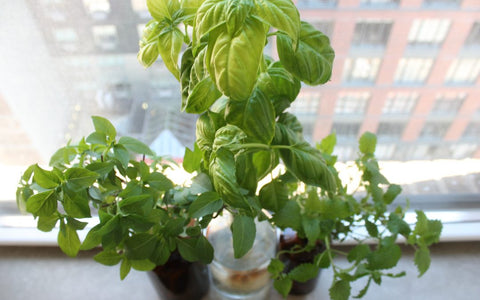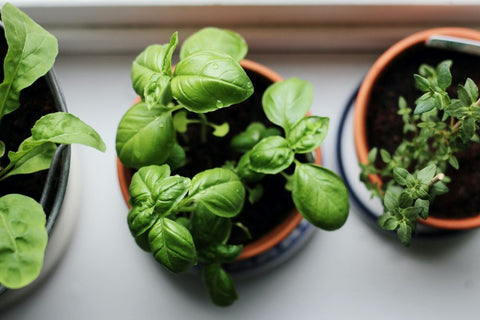Who Knew…
So you might have thought they were just chillin’ while sitting there looking all leafy and green, but your plants are actually much busier than they might look. You see plants are what’s known as ‘photoautotrophs’, which means they ‘eat’ light as their food. They convert light energy into chemical energy to fuel their growth. Why should you care? Light is critical to plant health and growth.

Let There Be Light!
If you’re relying on natural light for your indoor garden, window orientation is one of the most important factors. North of the equator, this means a south facing window is likely your best bet (and visa versa for the Southern hemisphere, of course). Being south facing alone doesn’t guarantee good natural light though. Other factors to consider are:
- Shadowing from other buildings. Here in NYC this is a big issue, as it would be in most other high density cities.
- Glazing on the window, which can reduce light by up to 30%. You are most likely to encounter treated glass in modern high rise buildings.
- Your location, and how far north of the equator you are
- The time of year
Not sure which way your window faces? Look yourself up on Google Maps!
So, Being The Plants Nerds We Are We Ran An Experiment…

We wanted to know exactly how much impact window orientation could have on plant growth, so we found a North(ish), East and South facing window sill to compare them side by side. The results are shown in the picture above.
We tested Basil, Mint, Oregano and Cilantro in each window. This is what we learnt:
- The North facing window was categorically the worst performer. Some plants totally died before the 40 day experiment even ended.
- Although the South and East facing samples were similar, the South facing window was glazed triple pane glass – which likely blocked more of the natural light than was the case for the East facing window sill.

Growing Tips
If your plants aren’t getting enough light, then they will grow up looking tall, skinny, weak and without many leaves. They’ll try to conserve what little light energy they have to grow vertically, in search of better light.
Here’s what you can do:
- Place it outdoors. Being careful of temperature shock (either too hot or too cold), you can place your World’s Smallest Garden outside your window where glass and shadows are less likely to block your light.
- Get a grow light. Grow lights are a great solution for year-round growing. This blog explains a simple setup that costs less than 40 bucks and will cost you around $4.73 a year in electricity (based on average annual US electricity rates)
- Your final option is to wait it out until Spring/Summer when natural light is likely to be more abundant. If there are less than 10 hours of daylight where you are, then you’re likely to have problems. Here’s a neat little tool for figuring out how much sunlight there is where you live. Depending on when you bought your World’s Smallest Garden it will have a shelf life of between 1-2 years. Check the bottom of the box for a date by which you should set your garden up.
Thanks to our friends who donated their window sills for this experiment. To learn more about starting your own indoor garden sign up below, or drop us an email at help@geturbanleaf.com










There are no comments for this article. Be the first one to leave a message!